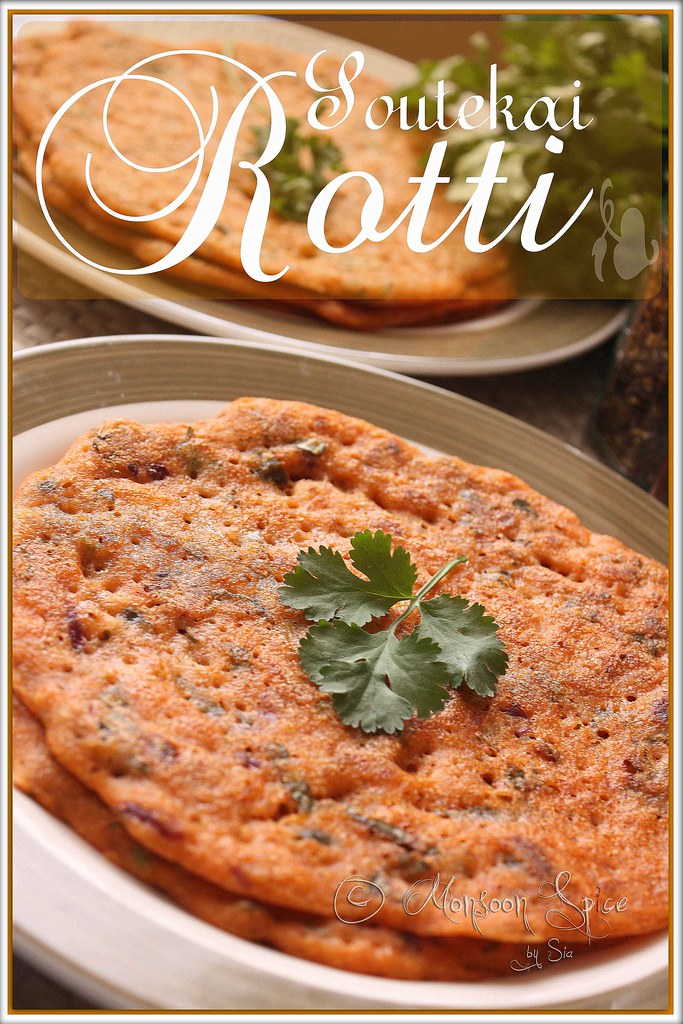
In spite of being stubborn and fussy eater for most of my childhood, my parents always made sure that my fussiness remained within four walls of our home as I was expected to behave and eat properly when we visited our friends and family! My Amma is known for her wonderful culinary skills among our family and friends. Her kitchen is a magical wonderland where she churns one pot of delicious food after another with ease and, of course, love! While everyone licked their plates clean, praising my amma’s culinary ingenuity, I for some strange reasons preferred and liked whatever my aunts or mom’s friends cooked! For me the simple dal or rasams cooked by them would always taste better than my amma’s cooking! As wise people rightly say “Ghar ki murgi dal barabar”, for some of us everything tastes better that is not home cooked!!!
And the saga would have continued if not for moving away from home and staying at hostel. First few days of hostel life was wonderful… if you don’t like what’s cooked in hostel mess, just hop to nearest restaurant and order your favourite food! Samosas or pizzas for breakfast? No problem… Big tub of ice cream for lunch? Go ahead… Gol gappa, Bhel puri or cups after cups of Cappuccinos for dinner? Who is stopping you????
Except, my stomach who stopped me and went on a strike after I put it into series of tortures! That was when I realised the true value of home cooked meals, especially the ones cooked by my mother. I learnt my lesson soon and started appreciating everything cooked by our loved ones. So my dear readers, if you are one of those lucky ones who are blessed to enjoy home cooked meals, especially cooked by your mother or loved ones, enjoy while you can! Trust me, nothing in this world can ever come close to the lovely food cooked by your mother or loved one that not only tastes delicious but is high in nutrition and love which is good for your health, heart and soul…
Apart from mom's cooking, other thing I missed after coming to UK is some familiar vegetables that are exclusive to Indian cooking. One such vegetable was Yellow Cucumber, also called as Dosakai in Telugu and Soutekai in Kannada. Few months back one giant Asian supermarket was launched in close by town and we have been fortunate to find some authentic south Indian vegetables and fruits on fresh vegetable and fruits section. Although these yellow cucumbers cost a bomb, I feel fortunate to get them fresh and readily available whenever my heart desires to eat something I grew up eating (and sometime hating!!! Now I know better!). These yellow cucumbers are generally spherical in shape and have shades of yellow & green coloured skin. It is commonly added in Sambar (Thick lentil soup with vegetable), Daal (Lentil soup) and also in making Pickles and Chutney. There is one another recipe from my native that makes the best use of this cucumber and it is called Soutekai Rotti.
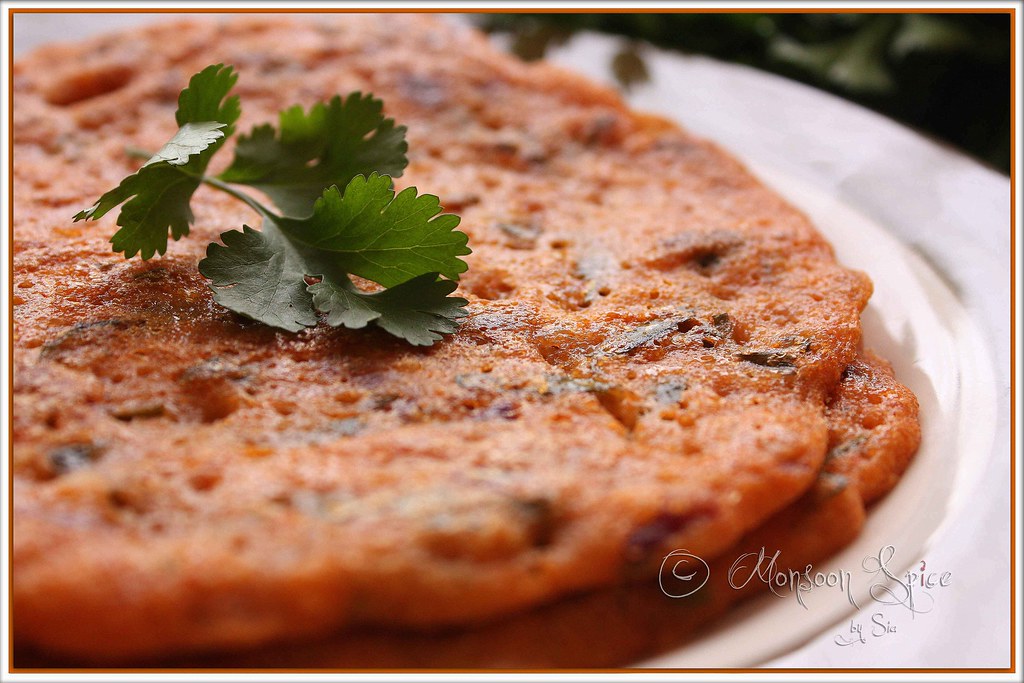
The following recipe for Soutekai Rotti comes from my mom-in-law who makes one the best Soutekai Rotti which is quite different from what my Ajji and Amma make back at home. While my Ajji and Amma would grate the cucumber, my Atte grinds them along with rice soaked in water along with some spices. Lightly dry roasted coriander seeds, cumin seeds add heady aroma to the Rotti when cooked and the dry roasted red chillies gives this rotti a spicy twist. Handful of fresh coriander leaves, finely chopped red onions and curry leaves lends some crunch, aroma and flavour to this already delicious rotti and ground fresh coconut simply enhances the flavour and takes the taste level to new height! If you are lucky enough to get hold of this yellow cucumber, give this recipe a try and see your heart, stomach and soul falling in love with this simple, delightful recipe! This goes to RCI: Udupi & Mangalorean Cuisine hosted by yours truly.
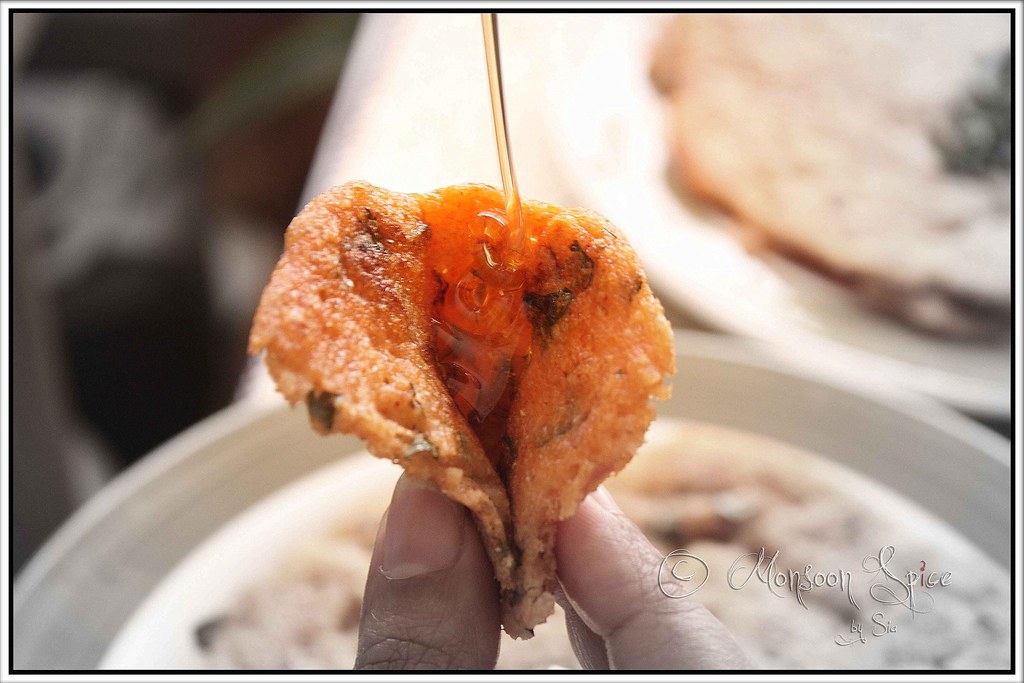
Soutekai Rotti (Spiced Yellow Cucumber Flat Bread)
Prep Time: 15 mins
Cooking Time: 4-6 mins per Rotti
Makes: 12-15
Recipe Level: Medium
Spice Level: Medium to hot
Serving Suggestion: Usually it doesn’t need any accompaniment but you can serve with Honey or any Chutney of your choice
Recipe Source: MIL
Ingredients:
1 medium Yellow Cucumber, peeled, seeded and cut into rough 1 inch cubes
2½ cups Rice, washed, rinsed and soaked in water for 4-6 hours
½ - ¾ cup fresh/frozen grated Coconut
½ golf sized Tamarind Pulp or ½ tbsp Tamarind Paste
1 large Red Onion, finely chopped
¼ cup Coriander Leaves, finely chopped
2 springs Curry Leaves, cut into thin stripes
Salt to taste
To Dry Roast:
1½ - 2 tbsp Coriander Seeds
5-7 Dry Red Chillies, stalks removed and cut into 1 inch pieces (Adjust acc to taste)
½-1 tsp Jeera/Cumin Seeds
Other Ingredients:
Little Ghee/Oil for frying
Special Utensils:
Preferably cast iron tawa or you can use non-stick tawa/griddle
Lid to cover tawa/griddle
Spatula
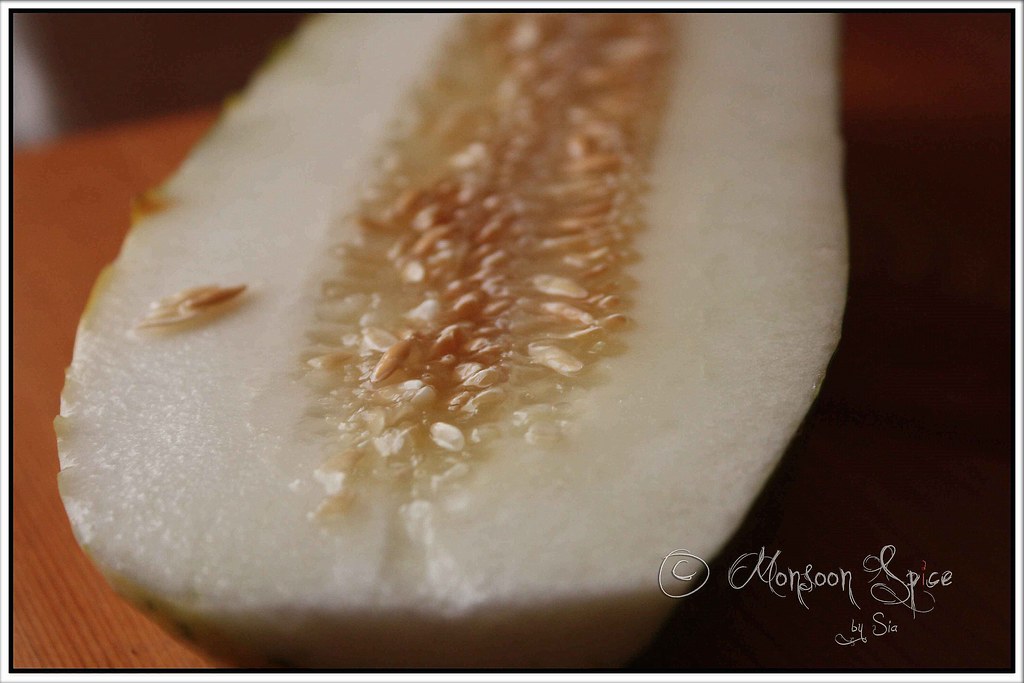
For Rotti Batter:
Dry roast coriander seeds, cumin seeds and dry red chillies on medium flame till the spices turn light golden red in colour, about 2 minutes. Let it cool slightly.
Transfer soaked rice, roasted spices, tamarind pulp/paste and cucumber cubes into a food processor or mixer grinder and grind them to thick batter (consistency should be that of an Idli batter) adding little water at time. Do this in 2-3 batches for better result. Transfer the contents into a large vessel and leave it covered on a warm place over night for the batter to ferment.
Next morning, grind coconut to fine paste adding very little water and add this to the prepared, fermented batter and mix well.
Also add finely chopped onions, curry leaves and coriander leaves along with salt to taste and mix them well. Let it rest for 20-30 minutes for the flavours to blend well before proceeding to make Rotti.
Proceed to make Rotti:
The best type of griddle or tawa for making this rotti is cast iron as it not only gives crisp texture to the rotti but also gives it a distinct taste. If you don’t have cast iron tawa then you can use normal non-stick griddle or pan.
Heat cast iron tawa/griddle on medium to high flame. Drizzle a tsp or two of oil and grease the tawa well. To grease the tawa, fold the paper towel into a wad and dip it into a bowl of cooking oil. Gently squeeze the wad to remove excess oil and rub it all over the griddle to grease it. Or, cut peeled onion in half. Pour a tsp of oil in the centre of griddle and use halved onion and rub it all over the griddle. Back in my native, we use dried yellow pumpkin stem to grease the griddle.
When tawa is hot enough reduce the heat to medium. Take about ¾ cup of batter in a ladle and pour it on the centre of tawa. Spread this batter into thick circle, of about 6-7 inch in diameter and about ¾-1 cm thick, with back of the ladle.
Cover the griddle with lid and let cook undisturbed for 3-4 minutes.
Open the lid and drizzle a tsp or more of oil/Ghee on the surface of Rotti and also around its edges and let it cook for another minute till its upper surface is cooked well (it should look cooked and shouldn’t be soft or runny).
Using wooden (for non-stick griddle) or metal (for cast iron griddle) spatula, carefully remove the Rotti from griddle and flip it. Ideally, the cooked surface should have turned golden brown in colour and crisp. Allow other side to cook for a minute or two after flipping.
Once cooked on both sides, transfer the Rotti to clean and dry plate.
Repeat the same procedure to make Rotti. Grease the griddle (if using cast-iron tawa), pour the batter, spread it in circular motion, cover and cook, drizzle oil/ghee, flip and cook and serve!
Serve this spicy and delicious Soutekai Rotti as it is as it usually doesn’t require any side dish. I like to dip in little honey and eat or you can also serve some chutney of your choice and enjoy!
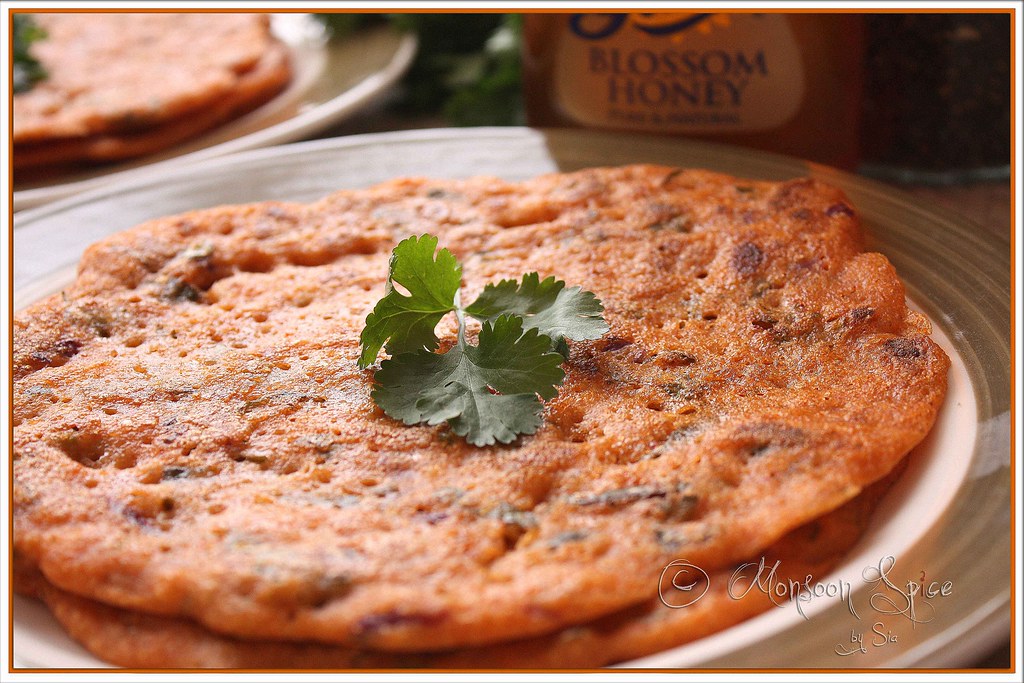
Notes:
You can also make a stack of Rotti and serve later, just like pancakes. Just ensure to keep the Rottis warm till you serve them in a closed dish. However, these Rottis will not be as crisp as the ones you serve immediately.
Reminder for RCI: Udupi & Managlorean Cuisine

Deadline: 31st July, 2009
Please go through the guidelines and include all the required information in your post and also in your e-mail while sending your entry. Don't forget to add Your Name, Your Blog Name, Name of the Dish, Type of Dish and Perm Link of the entry along with the gorgeous Photo of final dish.
Click Here or on the logo to find out more information on this event.

New to me, never made rotti with cucumber and rice, love the color!
ReplyDeletevery nice idea... would love to try!looks very pleasing.
ReplyDeleteLove rottis, am sure this one will be loved as well. Just have to get hold of that southekai.
ReplyDeleteLooks perfect with the golden honey..
ReplyDeleteThis comment has been removed by the author.
ReplyDeleteI made this last week, but with cucumber and how i miss that yellow southekai! I too was a very fussy eater and guess what i never used to like yellow southekai! and now craving for it!!!
ReplyDeleteYour rottis look too good!
Oh this looks so delicious! I agree with you..moms recipes are always precious!
ReplyDeleteNice,
ReplyDeleteI live in Canada and I agree with you it sure costs a bomb! But I know it as Mangalore sowthekai and I only know that we make sambar, gojju or sasuve out of it. This is new..But while this recipe looks interesting, it is more kind of dosa, than rotti don't you think? Even though it has the name of rotti.. anways, it looks nice. By the way, instead of grinding it fine, you can keep it coarse and steam it like idli too.. I guess, this is only my creativity. I don't know if this works.. I follow a similar recipe for cabbage idli and it tastes delicious.
Thanks for the recipe. The photos are nice too.
Neela
Hi,
ReplyDeleteI live in Canada and I sure agree with you that this vegetable costs a bomb. I know this vegetable as Mangalore Sowthekai as I am from Bangalore. I remember that they used to make Sambar, gojju, or sasuve out of it. We also do majjigehuli just like any ordinary sowthekai.
While this recipe is nice, it looks more like a dosa instead of a rotti even though it has the name of rotti.. don't youthink?
Instead of grinding it fine, you can leave it coarse and steam it like idlis.. it is my creativity and I don't know if this works. I follow a similar recipe for making Cabbage idlis and it tastes delicious.
Thanks for the recipe. The photos are nice
Neela
Wow.. never tried Cucumber rotti, was only familiar with dosa...Looks delicious..
ReplyDeleteSia, i have mailed you my entries again.
good you posted a reminder! i had forgotten about RCI. will try something this weekend :)
ReplyDeleteDelicious looking roti, Supriya! I've never tried this vegetable before. Does it taste at all like cucumber?
ReplyDeleteYour blog proves WP is not all that :). I feel like my struggle with my own was effortless.
ReplyDeleteThe question is: How can the average person not of Indian heritage recognize individual Indian Cuisines or at least what makes each unique? Is there any particular post anyone has written that easily explains it? Plantain Leaf did explain in a recent recipe that Mangalore uses coconut oil rather gourd nut or sunflower oil in Andhra. I only thought it would be nice to know.
That looks wonderful...this is the Mangloor soutekai right ? We use that a lot in our Konkani cooking..Its pretty tough getting it even in India. I live in Ahmedabad now and have never seen that vegetable here...
ReplyDeletehi sia...u have a wonderful blog with such nice picture and good presentation as well...and this dish is new to me but looks really good...
ReplyDeleteA completely new recipe for me. It sounds delicious and interesting. We call Dosakaya as
ReplyDeleteVellairkai used for Vishu kani.
Boomarked.
Very new to me.....looks yum....hmm home cooked food that too maa ke haath ka khana......baath hi kuch aur hain....
ReplyDeleteI have never had southekai rotti .. I loved that color
ReplyDeletehii sia,
ReplyDeletehope you are doing dood,
never seen this vegetable arng here..can i know where did you buy it from,thanks in advance...
hope you are enjoying summer..
regards,
priya
loved readin ur post as always,..;-)
ReplyDeleteThe recipe is new to me,but we have a similar southekai thousali in konkani.But the spices used are different. Looks lovely and superb.I prefer with chutney or just as itself never honey
ReplyDeleteOh yes Sups! nOthing beats mum's cooking .
ReplyDeleteYour recipe is new to me, but it looks lovely.
Lovely presentation and worth a try!!
ReplyDeleteGreat recipe!!
Drop in sometime to my blog!!
hi
ReplyDeleteThanks for this great recipe
I will just have to try it and make it for my sons tiffin box.
It looks so tempting, There are many recipe are available like this in following site http://waytobooks.blog.co.in
ReplyDeleteHave been reading your blog for several months, learning, loving and salivating. I'm so glad you are continuing to provide these lovely stories, recipes and pictures. I'm now going on a hunt for yellow cucumbers !
ReplyDeletefoodhst
It is only thru blogs that i have learnt about Rotti. This looks so delicious. But i had no idea you could have this with Honey! it is like i have to have the last bite of dosa sweet.. & i like it:-)
ReplyDeleteSoma(www.ecurry.com)
Can one substitute regular cucumber in this? Is the flavor of the yellow cucumber very different?
ReplyDeleteYeah, it was take it or leave it at my home too. I'm glad about it now :)
@All, Thank you friends:) glad u all found this recipe interesting and i hope that you are tempted enough to give it a try:)
ReplyDeleteMangala, Neela ,
It's called rotti because its texture is more like a rotti than dosa. and unlike dosas, it takes double the time to cook and it is cooked till both its sides turn crip. i have posted similar recipe for Rava/Semolina Rotti some maonths back and even that one is poured like dosa.
Mangala, Sambar dosa? now that i have not heard of. do u have its recipe?
Neela, i have not tried steaming it like idli as i prefer it this way, crisp and delicious! let me know if u make idli using same batter :)
@Keerathana, I can understand! the taste is quite different when u use yellow soute than usual cucumber isn't it?
@Kalai, yellow cucumber tastes quite different from usual cucumber that we use in salads and usually its not eaten as raw :)
@*
please pardon my ignorance but what is WP?
and coming to your question about recognising individual indian cuisine, all i can say is it comes with experience and tasting everyone of them. even many Indians don't know much about regional cuisines. for many south Indians, north indian cuisines means naan, paratha, aloo matar, palak paneer etc and and north Indians think south Indian cuisine is all about dosa, idli, vada and sambar!!!
It is through blogging I have learnt little more about different regional cuisines. If not for blogs, I would have been one ignorant person like millions out there thinking all onion based curries comes from north India, peanut based curries from AP and Gujarat and so on…
Visit different blogs and you will notice that every blogger posts more recipes from the region they come from. Go through the recipes they post and you will slowly learn the difference in the way they cook from bloggers from other region/states from India. sometimes, there may not be much difference in the way they cook other than using different oils or using different spices/ingredients in tempering and other times, the cooking technique is totally different from others! As I said before, understanding comes from knowledge and experience!
@Arch, yes, it is also called as Mangalore Soute :)
@Priya, I have mailed u the details.
Curry Leaf, do share your recipe for soutekai thousali.
@foodhst, Thank you! :)
@Vaishali, I have not tried it with other cucumber as the one I get here is sweet and too watery! But there is no reason why you can’t try with common ones. Make sure that you remove its skin and seeds. Taste wise yellow cucumber is very different to normal salad cucumbers we get. It has little hard flesh than the common ones.
Oh lovely rottis Sia! The bright color is so appetizing and what a taste you have by drizzling honey to this spicy roti ? My father used to have piping ot idlis mopped in honey! I love the distinct taste anyway! But in Chennai they sell stout small ones (in the siz of a large mousambi but yellow colored and smooth surface) as dosakai. Is that the same and just the shape differs ?
ReplyDeletePersonally I would never presume to make a comment on how one cooks their own food...it is all related to how their family cooked it and quite honestly...everyone 'tweaks' it a bit here and there to make it their own. So who is to say what is the REAL 'this or that'....n'est pas? Grin. I love to hear how everyone makes their favorite food...this looks wonderful. I don't know what yellow cucumber is but I shall google and find out. Love it. And I do agree that your photos are amazing! Rotti with honey...see...now that is new to me...love it!
ReplyDeleteFinally, something I can make with the dosakai I keep seeing, which is not dal related! Looks yummy - thanks for posting!
ReplyDeleteWell, there's nothing quite like living away from home to make one appreciate the goodness of home-cooked food (especially Amma's). ;)
ReplyDeleteWe call this veggie "vellirikkai" and use it a lot but never this way. I'm goign to try this for sure.
It's really beautiful S -- dosakaya roti and the story :)
ReplyDelete@Nirmala, I think it's one and the same. I have seen some round shaped cucumbers which are sold as yellow cucumbers.
ReplyDeleteyes, the cucumber we get here is watery and very different. Miss all the functions and oota with this southekai sambar:)
ReplyDeleteBTW, Had planned a lot for RCI, but nothing seems to be working out. Hope to catch up soon:)
-Keerthana
This roti is new to me too Sia. We usually make dal with sorakaya and even pickle. I have to try this when I find it here.
ReplyDeleteTake care dear. Leaving to India tomorrow.
Thanks to your pictures i tried the recipe and ........... hold your breath everyone has enjoyed it.
ReplyDelete